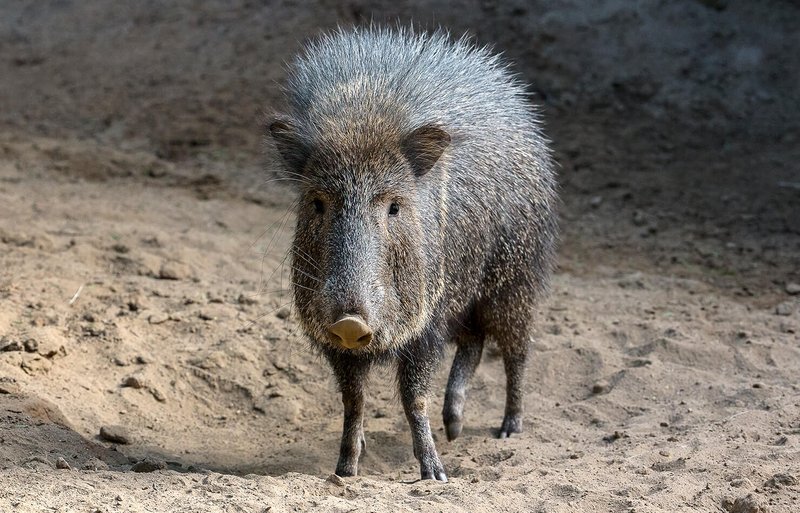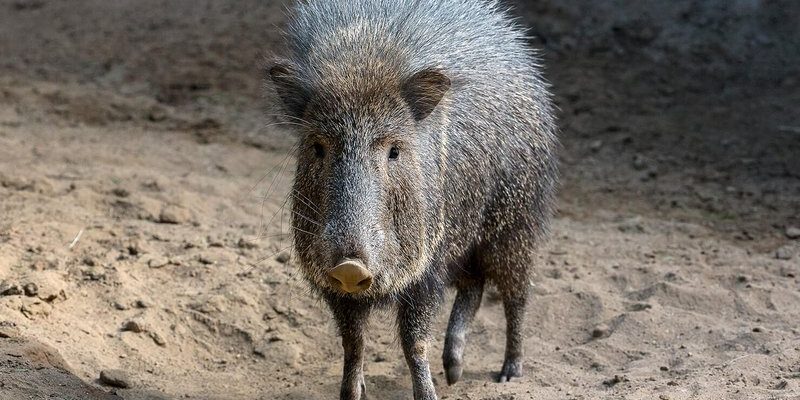
Peccaries, primarily found in the Americas, are social creatures that roam in herds. Their social behavior is something akin to a family gathering, complete with playful interactions and strong bonds. Unfortunately, despite their social nature, they face numerous threats that endanger their populations. Understanding these threats is crucial not only for the peccaries’ survival but also for the health of the ecosystems they contribute to. Here’s the thing: when one species falters, a whole web of life can be affected.
What Exactly is a Peccary?
To get started, let’s clarify what a peccary is. Peccaries are medium-sized mammals that belong to the family Tayassuidae. They have a stout body, short legs, and tusks that can be quite impressive. There are three main species: the collared peccary, the white-lipped peccary, and the chacoan peccary. You might encounter them in rainforests, savannas, or even mountainous regions, primarily across Central and South America.
Imagine walking through a dense jungle and suddenly spotting a herd of peccaries rummaging through the underbrush. They’re often found foraging for roots, fruits, and even small animals. Their diet plays a crucial role in maintaining healthy forest ecosystems since they help disperse seeds as they move around. It’s like they’re little gardeners, planting the next generation of trees with every meal!
Current Status of Peccary Populations
You might be wondering, “Are peccaries endangered or just facing some challenges?” The answer is a bit complex. The collared peccary is relatively stable, with populations estimated in the millions. However, the white-lipped peccary is considered near threatened, and the chacoan peccary is listed as vulnerable by the IUCN (International Union for Conservation of Nature). The main distinction lies in habitat loss, poaching, and hunting pressures.
In many areas, forests are being cleared for agriculture or urban development. This loss of habitat is like stripping away layers of a cake; once it’s gone, you can’t just put it back. The remaining habitats often become fragmented, isolating peccary populations and making it harder for them to find mates. This isolation can lead to inbreeding, which can further threaten their survival.
Major Threats to Peccaries
So, what’s putting these animals at risk? Several factors contribute to the decline in peccary populations, and understanding these threats is essential for effective conservation efforts.
- Habitat Destruction: As mentioned earlier, deforestation for agriculture is a massive concern. Every tree cut down can have a ripple effect on wildlife.
- Hunting: Peccaries are hunted for their meat in various regions. While some communities rely on hunting for food, uncontrolled hunting can severely reduce population sizes.
- Climate Change: Altered weather patterns can affect the availability of food and water sources for peccaries, making their survival more challenging.
By acknowledging these threats, conservationists can better strategize on how to protect these animals and their habitats. It’s not just about saving a species; it’s about preserving entire ecosystems.
Conservation Efforts and Success Stories
Despite the challenges, there’s hope on the horizon! Various conservation programs are underway to help protect peccaries and their habitats. For example, national parks in Central and South America have been established specifically to safeguard these creatures.
Many organizations are also working with local communities to create sustainable practices that benefit both the people and the environment. It’s an uplifting sight when local farmers adopt methods that prioritize wildlife conservation. When communities understand the ecological role of peccaries, they’re often more willing to protect them.
One success story comes from the conservation efforts in Brazil, where the white-lipped peccary population has started to stabilize after years of focused protection. It’s proof that with the right strategies in place, even vulnerable species can bounce back.
How You Can Help Peccaries
You might be thinking, “What can I do to help?” Well, there are several ways to contribute to the preservation of peccaries and their ecosystems, even if you’re far away from their natural habitats.
- Support Conservation Organizations: Donations to groups focused on wildlife conservation can make a significant impact.
- Educate Others: Share what you learn about peccaries and their habitats. The more people know, the more they can care.
- Choose Sustainable Products: Opt for products that don’t contribute to deforestation or habitat loss. This choice can help protect wildlife globally.
Even small actions can lead to bigger changes. When communities unite, they can create a lasting impact for species like the peccary.
The Importance of Biodiversity
Finally, let’s take a moment to grasp why conserving peccaries—and all wildlife—is so vital. Biodiversity is like a finely woven quilt, where each thread plays a role. When one thread is pulled away, the whole fabric starts to unravel.
Peccaries are crucial for their ecosystems. As they forage, they help maintain plant diversity and promote healthy soil. This, in turn, supports various animal species, creating a balanced environment. The loss of peccaries could lead to changes in vegetation patterns and increased vulnerability for other species.
Additionally, preserving biodiversity has benefits for us too. Healthy ecosystems regulate clean air and water, provide food, and even offer recreational opportunities. It’s a win-win situation.
In conclusion, the question “Is the peccary endangered?” carries a layered response. While some species are doing relatively well, others face serious challenges to their survival. But with awareness, education, and concerted conservation efforts, we can make a difference.
Every little bit helps. Whether you’re donating to conservation efforts, sharing knowledge, or simply appreciating the beauty of nature, you’re contributing to a larger cause. The fate of peccaries—and countless other species—rests in our hands. Let’s work together to ensure that these unique animals continue to roam our forests for generations to come.

